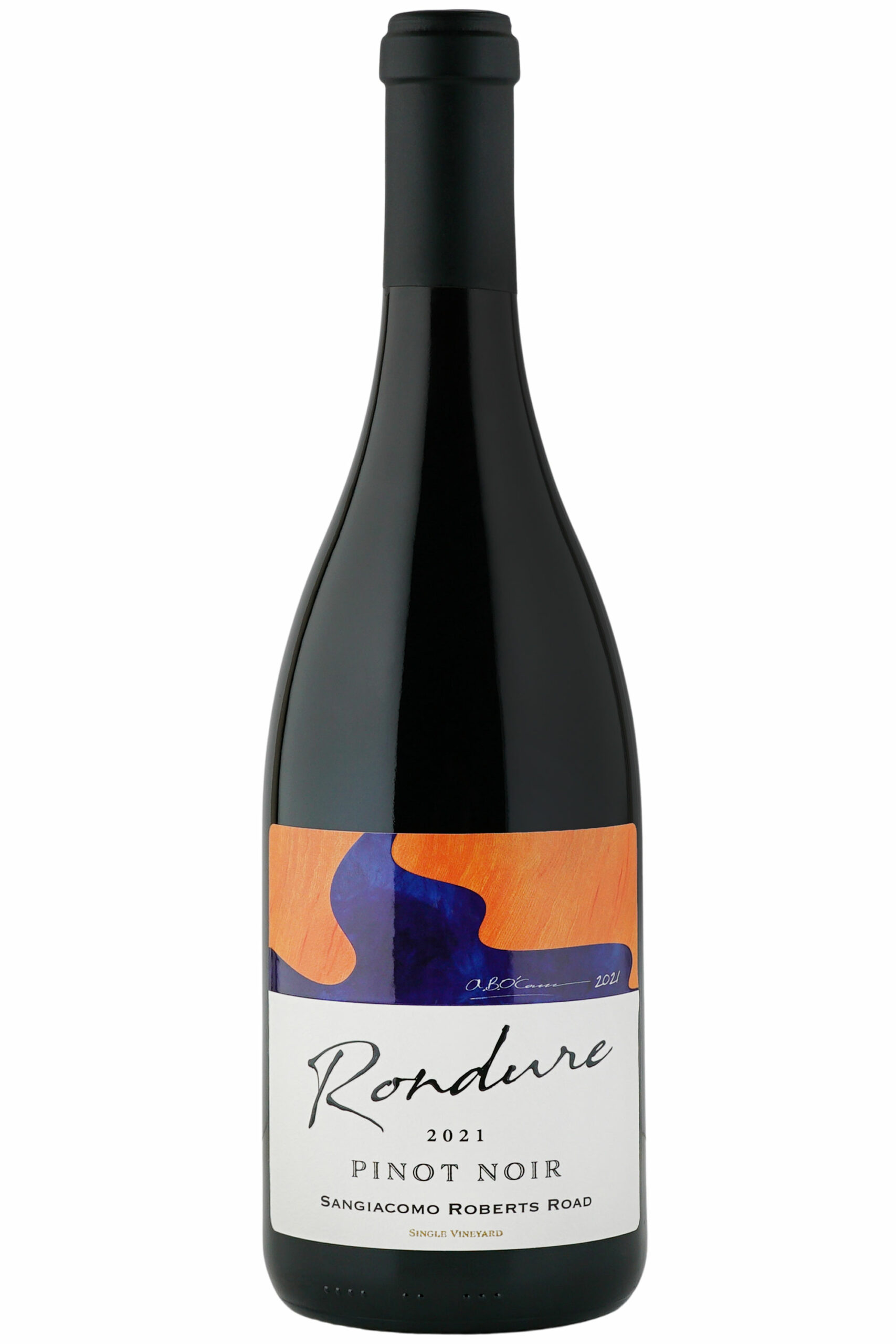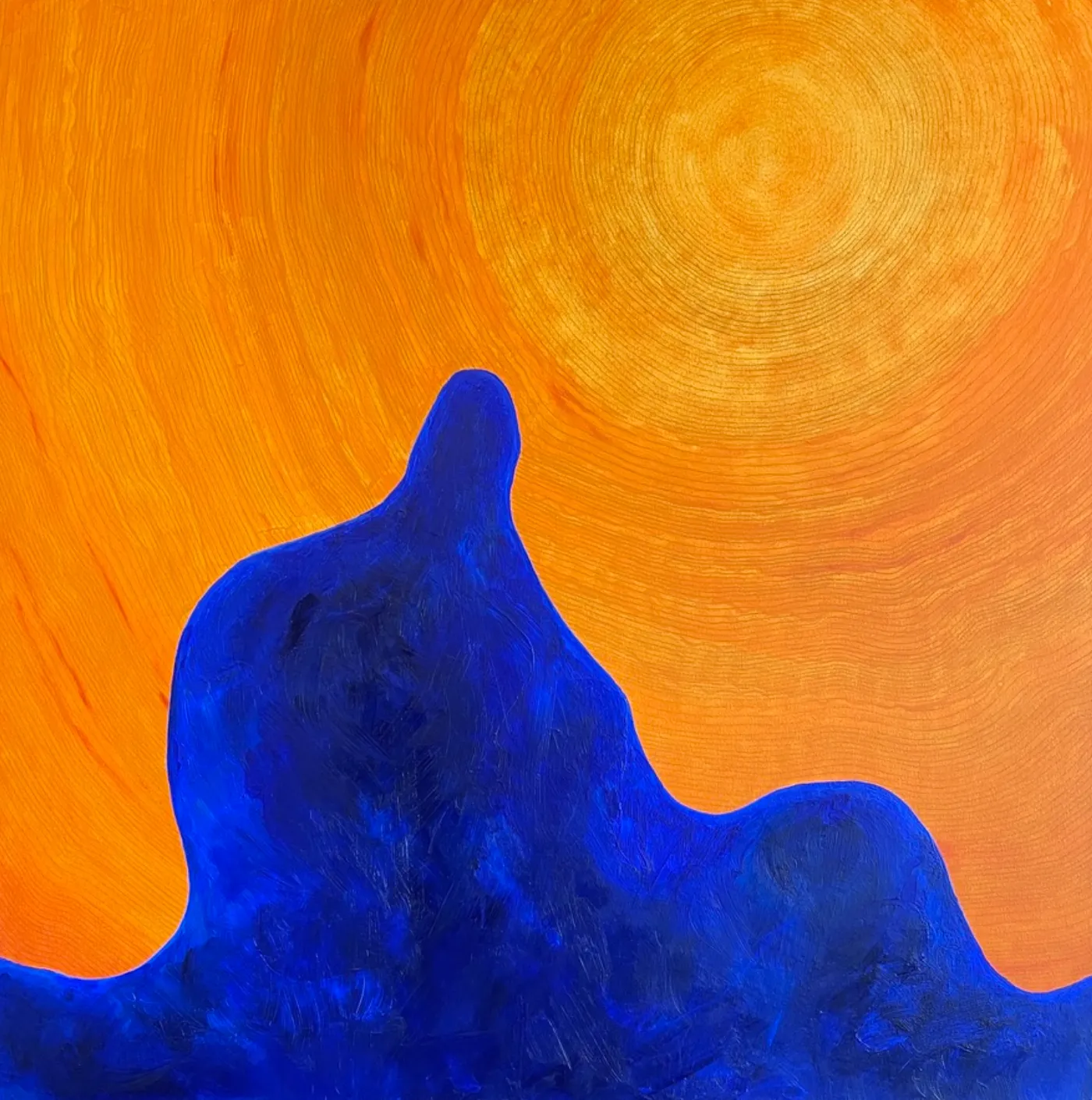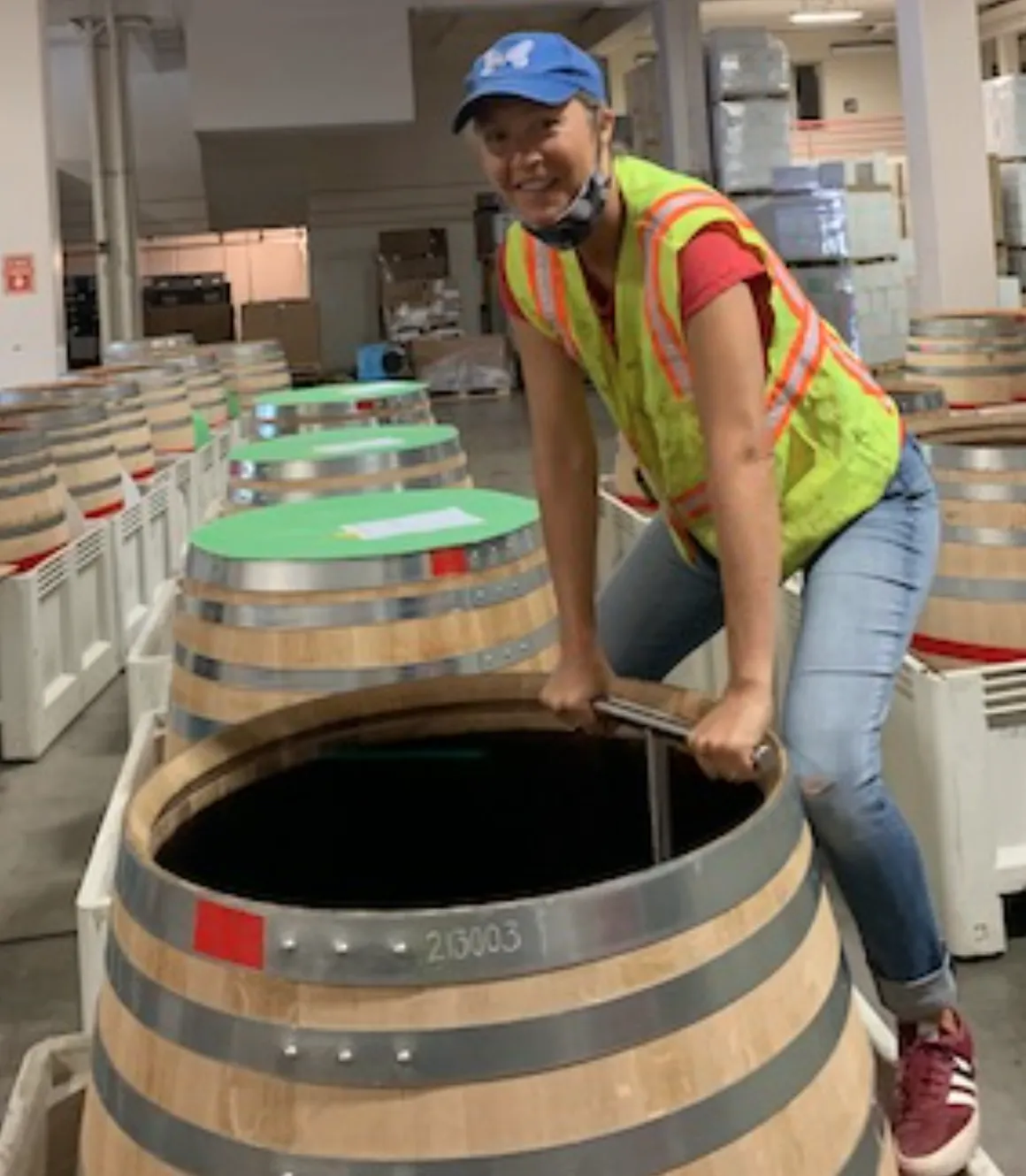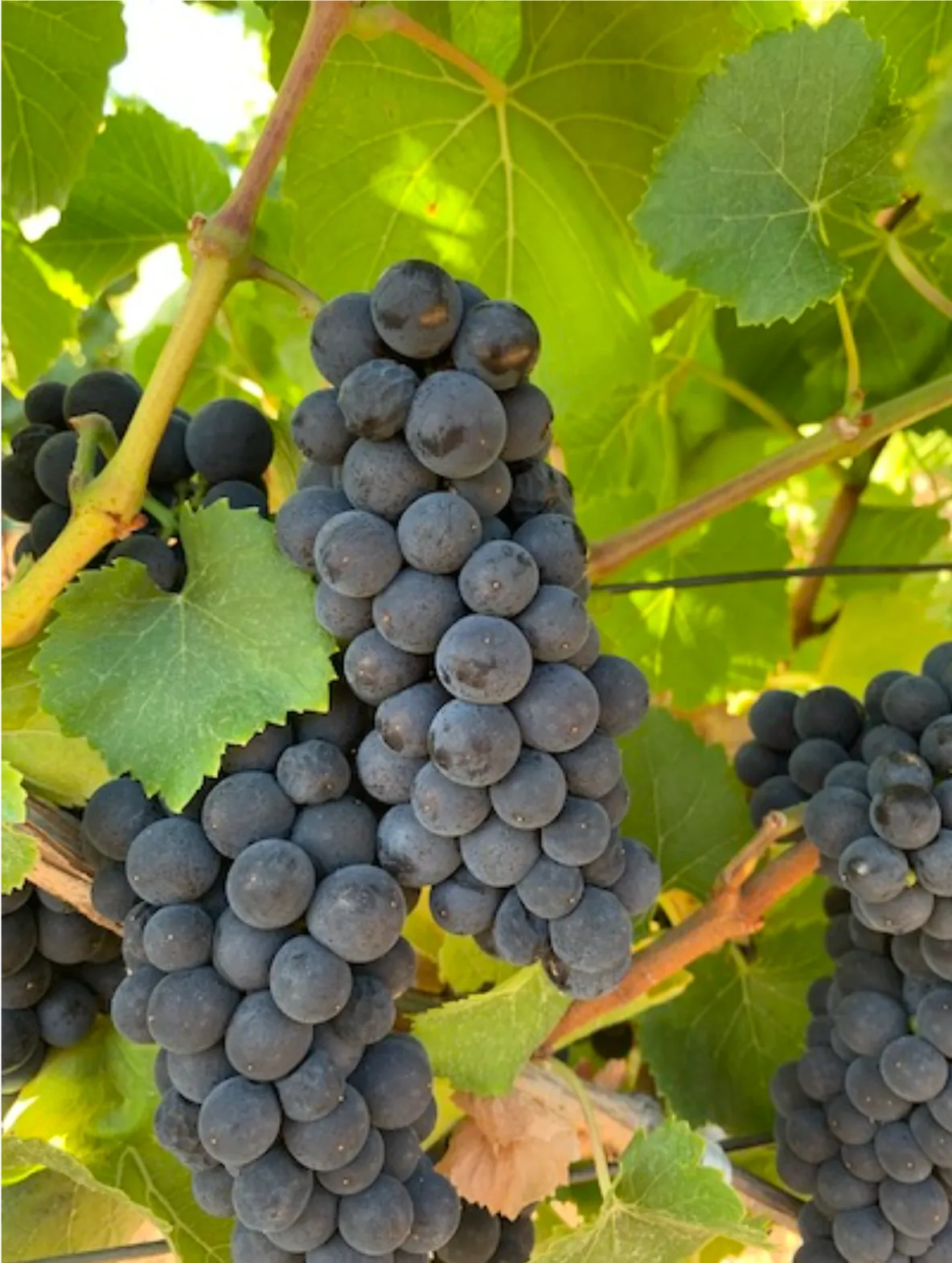2021 Pinot Noir Sangiacomo Roberts Road

Vintage: 2021
Clone: Pommard & Swan
Alcohol: 14.0%
pH: 3.59
TA: 5.5 g/l
Production: 2 Barrels (Puncheons),100 Cases
Bottled: July 2023
Release: February 2024
$85
Winemakers Note
Rondure: a gracefully rounded object.
Rondure Wines are crafted meticulously to exhibit different layers over time, resulting in wines that are complex, layered, rounded and beautiful. They’re not just wines, but works of art that invite you to slow down and appreciate the little things, from the multitude of personality traits in one glass to expanded time and space with loved ones. Indulge in the nuances in each wine because great art is meant to be savored – and in doing so, you create memories to last a lifetime.
The 2021 is the second vintage of Rondure. The year was another dry one, resulting in a much richer wine than the 2019. The Capas Technique brings out the best in this amazing vineyard, highlighting its bright flavors and intricate complexities.
Tasting Notes
This Pinot Noir offers a high-tone fruit profile that flows down onto a subtle underpinning of savory mushroom, creating a delightful interplay of flavors.
The nose unfolds with layers of fragrances. Rose petal notes gently lead the way, followed by the bright and inviting aroma of ripe raspberries. Hints of bay leaf and subtle pencil shavings add an intriguing herbal and mineral aspect.
Take a sip and the smooth tannins coat your mouth with a luxuriously velvet texture. Roasted herbs emerge, infusing the wine with a savory richness that resonates with the nose. The black plum and cranberry flavors provide a vibrant and juicy fruitiness that balances the savory elements, with a subtle hints of mushroom and forest floor after rain.
The Art of Rondure

For over three decades, my professional pursuits and personal passions have revolved around the art of winemaking — a journey akin to the cyclical ripples in a pond after a stone’s impact.
In my spare time, I’ve delighted in creating other forms of art. It was my wife, Ellen, who first pointed out the connection that my non-wine-related art frequently took on gracefully rounded forms, and it was Ellen who came up with the name Rondure.
Title: Urn of my dream 1
I was struggling to come up with a piece of art for this second bottling and routinely found myself asking my subconscious for inspiration before going to sleep at night. And then one night, it hit me; I had this vivid dream where I was walking through the narrow streets of a Spanish town I know well, and I came across this small house with a tiny courtyard. In the courtyard there were a couple of rubber plants and this tall terracotta urn, probably about 5 feet high. It had what looked like growth rings emanating from the shoulders, and a stunning blue glaze at the bottom that had dribbled down the side in an organic way. I remember being so captivated by it that I stopped, walked back to get a better look and thought, “wow, this is beautiful.” It was then that I woke up to discover it was the middle of the night in my bed, not afternoon in medieval Spain. I started wondering if I had actually seen this urn before? I determined it had to have been my subconscious that came up with – an original. It was exciting and terrifying at the same time – how could I capture this image and do it justice on a label? But then I realized, this was my chance to bring this dream to life. So, I started painting…
LAyers
Over the years I have come to realize that great art requires a minimum of 10 layers, most of which are never seen by the viewer but without the layers the art would be less. These are the top 10 layers that make the 2021 Rondure Sangiacomo Robert’s Road Pinot Noir art:
1st Layer: Variety: Pinot Noir
2nd Layer: Clones: Pommard & Swann
3rd Layer: Vineyard: Sangiacomo Robert’s Rd, Petaluma Gap AVA.
4th Layer: Capas Early Pick: Around 22 Brix
5th Layer: Capas Later Pick: Around 24 Brix
6th Layer: Natural Ferment
7th Layer: Whole Bunch Inclusion: Around 10%
8th Layer: Open Barrel Ferment
9th Layer: Extended Fermentation from Capas Process
10th Layer: Slow aging in Puncheon Barrels then Concrete Tank:
11th Layer: Label; The Art of Rondure
Winemaking
As with all Rondure wines, this wine was produced via the capas method, an ancient style of winemaking that layers in different ripeness of fruit into the ferment over an extended time.
The first round of grapes were picked around 22 Brix (about 13% alcohol). and-picked at night and delivered to the winery at sunrise, the fruit passed across the sorting table and was destemmed immediately. 10% of the fruit was added whole-cluster, which provides a bit of extra tannin and helps provide the structure the wine will need for aging. The resulting must went into some large neutral oak puncheons (500 L/132 gal) with their lids removed. Each vessel was filled ⅓ full. I love fermenting in puncheons, as it builds complexity in the wine.
Fermenting in oak barrels allows for the seamless integration of oak tannin. The must sits for 7 days as the native yeast multiply and eventually start fermenting the must.
A second pick was made, 7 days later, when the grapes were at approximately 24 Brix (14% alcohol). Half the fruit was destemmed and allowed to sit while the other half of the lot was added to the barrels that were already actively fermenting at about 90F. Like the first round, 10% of that fruit was left whole-cluster. Adding the fresh fruit naturally cooled the ferment and diluted the yeast population, extending the fermentation time. This additional time contributes to mid-palate richness in the wine.
After another three days, when the fermentation temperature again approached 90°F, the final third of the fruit was added, resulting in the same lowering and slowing of temperature and fermentation.
The capas process results in a ferment that takes nearly twice as long as a regular ferment.
Post fermentation, the wine was pressed to tank while the lids were reinstalled on the puncheons. The wine was then returned to the puncheons and aged for 6 months, in 50% new French oak and 50% neutral French oak. Larger puncheons have less surface area relative to the volume of wine they contain compared to smaller barrels. This means wines in puncheons are exposed to less oxygen through the wood, leading to a slower and more gradual aging process. Wines aged in puncheons take on more delicate oak undertones and often have a longer aging potential due to the more gradual and controlled evolution.
After puncheon aging, the wine was racked from barrel to small concrete tank, where they sat for a further 6 months. Concrete tanks are largely inert, meaning they don’t impart significant flavors or aromas to the wine. This final stage of aging in concrete allows the wine to “harmonize” prior to bottling. I can’t explain why it works but it definitely helps the wine calm down a little. Concrete also contributes to the development of a soft and silky texture, which is particularly beneficial for wines intended to age gracefully with refined tannins.
The wine was bottled unfiltered and rested in bottle for 6 months prior to release. It will last and improve, for as long as your patience will allow.
Vintage
The last of the drought years, resulted in lower than average yields. The season’s modest yields, mild summer, and extended, rainless ripening period created ideal conditions for fruit development. Though the yields were only about half of what they were in 2019, the fruit was that much more concentrated and expressive.
We’d be remiss not to mention that this vintage was still during the height of the pandemic. Masks were required, teams were smaller and the threat of another lockdown in our area loomed. Yet through it all, the grapes (and we) prevailed.

Ellen punching down puncheons
Clones
Pommard: Hailing from the Pommard region in Burgundy, France, this clone produces wines with deep color, rich and robust flavors, and a luscious, velvety texture. Its hallmark notes often include dark cherry, plum, earthy undertones, and a hint of spice. Pommard clone Pinot Noir wines are celebrated for their complexity and age-worthiness, making them a favorite among winemakers seeking depth and structure in their Pinot Noir expressions.
Swan: The origins of the Swan clone of Pinot Noir remain shrouded in mystery. The original vine cuttings, rumored to have been taken by Joseph Swan (a heritage producer in California) from the renowned Domaine de la Romanée-Conti in Burgundy, elude precise documentation. What we do know is wines produced from this clone are celebrated for their elegance and delicacy. They exude bright red fruit flavors, particularly cherry and raspberry, as well as floral and tea-like aromatics. Swan clone Pinot Noir often showcases a fine balance between acidity and silky tannins, resulting in wines that are approachable in their youth yet possess the potential for graceful aging. This clone is favored by winemakers for its ability to convey the nuanced, terroir-driven characteristics of the vineyard where it’s planted.
Vineyard: Sangiacomo Roberts Road
The Sangiacomo family has been farming in Sonoma County since the late 1920’s and planted their first vineyard about 40 years later. Roberts Road Vineyard boasts some of the family’s most esteemed grapes, with the resulting wines exuding elegance characterized by their opulent yet delicate nature and velvety, supple mouthfeel.
The growing season is long, slow and even – the perfect combination for high quality, balanced grapes. Morning fog lingers until mid-day, ensuring optimal ripening conditions. This is consistently one of the last vineyards in the area to be harvested.
Located north of Copeland Creek, the vineyard has well-drained, gravel-enriched soil and two distinct watersheds: one flowing south to San Pablo Bay and the other north to the Russian River.
Originally planted in 1999 with select Chardonnay and Pinot Noir clones, Roberts Road Vineyard now hosts an array of fourteen different clone and rootstock combinations of these Burgundian grapes. More than twenty distinguished wineries source grapes from this vineyard, yielding over a dozen vineyard-designated wines, each a testament to the exceptional character and terroir of this remarkable site.

AVA: Petaluma Gap
The Petaluma Gap is a gem within the boundaries of Sonoma County, with viticulture, topography and weather so extreme, you might think you were in the Scottish Highlands rather than the coast of California.
The region benefits from the cooling influence of the Pacific Ocean, which creates a significant diurnal range. During the day, the area can experience moderate temperatures, while the marine layer and coastal breezes cause nighttime temperatures to drop significantly.
Petaluma Gap is heavily influenced by coastal fog and strong winds. The fog blankets the vineyards in the morning, providing a slow and steady ripening process. Additionally, the wind helps reduce disease pressure in the vineyards by promoting airflow and preventing mold and mildew development.
The region’s soils are primarily composed of marine sediments. These well-draining, sandy soils are excellent for root development and water management. They allow the vines to penetrate deep into the earth, accessing essential nutrients while preventing waterlogged roots.
The climatic conditions and diversity of terroir contribute to the complexity and balance of the grapes. The slow ripening process, combined with the cooling effects, helps grapes achieve optimal phenolic ripeness while maintaining acidity, resulting in wines with depth and structure.
